Excerpt from ‘The history of the Black Shroud, from Amdapor to Gridania’ by Archon Niniri Niri.
Amdapor was founded in the aftermath of the Fifth Umbral Calamity, the Calamity of Ice, as the survivors migrated across the realm to found their own villages, each dedicated to one of the Twelve. Some of these villages grew into towns, then city-states. Amdapor was one of these, and survived the initial centuries of war and instability to emerge as one of the six larger surviving states. Amdapor was formed in Central Aldenard, in the region modernly named the South Shroud, by a group of hyur migrants who chose to build their home on a wide plain of white stone outside of the Twelveswood and 300 years after the age begun Amdapor had already blossomed into a bustling city. Unlike modern Gridania, Amdapor failed to form an agreement with the elementals of their neighboring forest, and so both parties assumed a policy of non-intervention with each other. This was successful in preserving peace, and the Amdapori rarely ever entered the forest.
Amdapor dedicated its worship to Nophica the Matron, fostering an air of respect for nature and peace, refusing to warmonger and thus becoming a respected, valued member of Eorzea’s political landscape. Despite this, Amdapor was not complacent and so dedicated themselves to maintaining a mighty defence. This included building a colossal edifice outside of their city, known in the modern day as Amdapor Keep. Golemancy was long a signature discipline of Amdapor, but as the years progressed they saw the unchecked violence and destructive power of Mhach and so developed their own school of spellcraft, white magic, which served to prioritize healing and defense. The development of white magic served as a deterrent to the Mhachi, who understood the danger of assaulting Amdapor and so a period of peace began which lasted for a few centuries. This peace begat other schools of magic, developed by those other city states surviving in the peace orchestrated by the mutually-assured destruction of Amdapor and Mhach.
Unfortunately any aetherological scholar will tell you that most schools of magic require aether to be drawn from external sources, learned as all of that discipline are in the cautionary tales of the Fifth Astral Era. This is most commonly the land, and as all the nations of Eorzea drew upon magic for every single aspect of their lives so too did the land begin to suffer, drained of its aether. Moreover, the fragile peace of the era was coming to an end. Although Amdapor supported peace and exalted in the richness of their culture, their city increasingly teamed with their golems, disguised as harmless statues. The peace began to spiral rapidly into a period of increasing political and military conflict before erupting into a conflict of legendary proportions; the War of the Magi. The war was immense and many of the continent’s greatest died, culminating in Mhach’s grand invasion of Amdapor, opening with an immense assault by legions of voidsent upon Amdapor Keep, overwhelming the ancient edifice and breaking its perfect record of resisting any attack.
The Keep was, as with all relics of the Fifth Astral Era, abandoned in the aftermath of the Calamity of Water. The elementals of the Twelveswood were deeply wary of white magic, and resolving to bury its discipline they hid the structures in thick overgrowth and magical glamours. The Seventh Umbral Calamity revealed many things however, including the Keep, revealing its ancient walls to the people of Gridania. The Lambs of Dalamud, a vile death-cult dedicated to the worship of Dalamud, immediately moved into the keep, requiring a cleansing by the famed Warrior of Light.
The Outer Keep
The Keep was accessed via a huge metal door, decorated with the beautiful plant-life one would expect of a society that worships Nophica. The craftsmanship of Amdapor, legendary in status even in the Sixth and Seventh Astral Eras, was immediately apparently upon entering the Keep. The stone and brick of the Palace was still almost entirely intact despite being far over a thousand years old and surviving not one but two calamities, a battle of legendary scale, the conflict between the Lambs and the Warrior of Light as well as the reclaiming tendrils of the Shroud. Deep channels acting as a moat surrounded easily defended stone platforms in front of the Keep’s entrance, leading further into outbuildings that would’ve acted both as fortifications as well as beautiful side-wings. These structures led into large circular towers ringed by twisting staircases, contributing to the defensive power of the Keep.
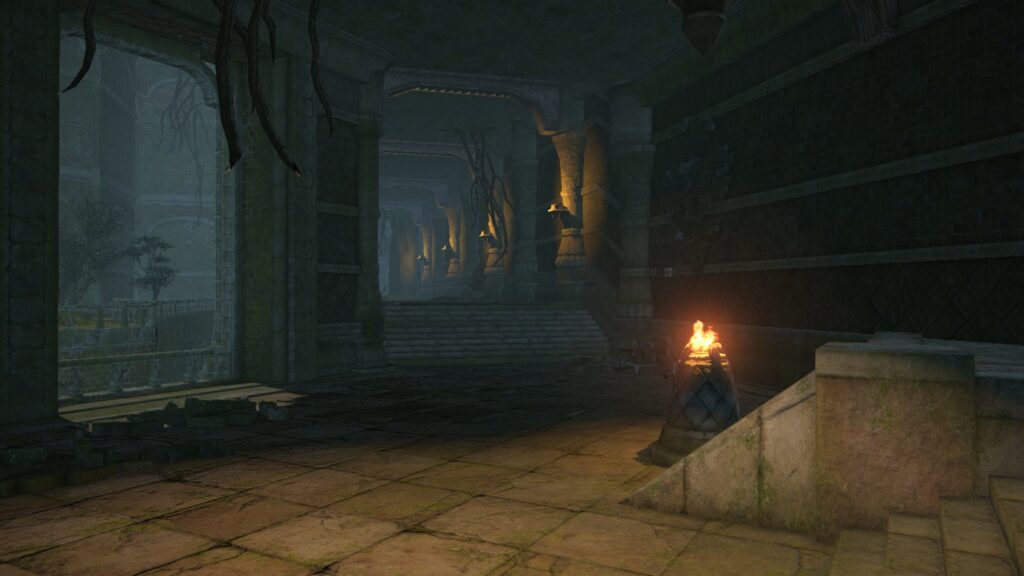
The Forecourt
The Keep was built around a large courtyard, specifically a forecourt due to its position at the front of the structure. The door leading to the inner keep was simply enormous, decorated with the plant symbols of Nophica. The courtyard allowed a full view of the fortress, beautiful in its construction with layers of arched windows and open-air domes.
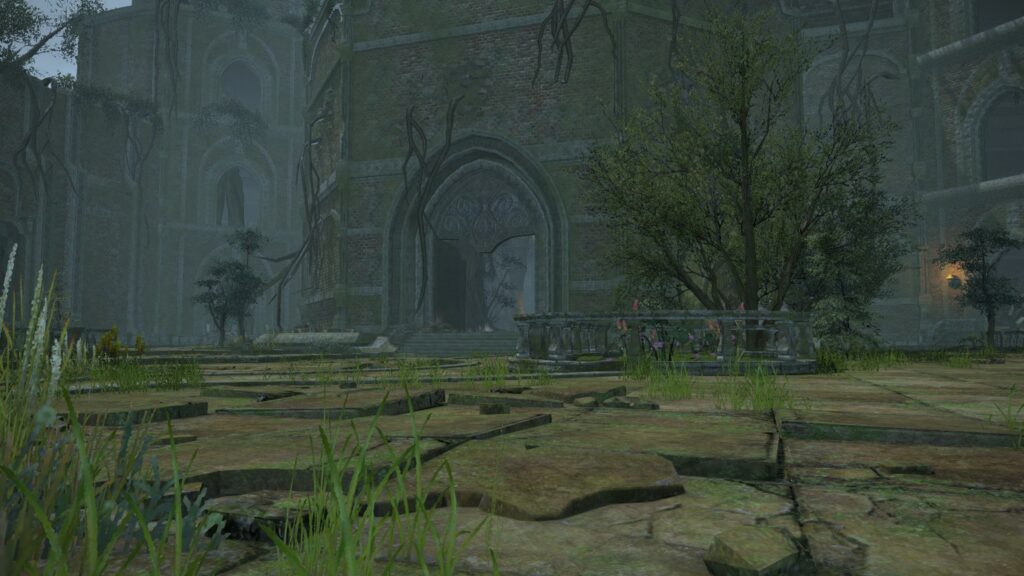
The Gier Hall
The team entered the Keep proper through the Gier Hall, a large room with ornate decorative patterns which covered the floor and a level of elevated walkways held up by broad stone pillars. Three doors led off from the central room, although they were blocked by debris and plant matter too thick to clear without further assistance. This request will be submitted to the relevant authorities in Gridania. Instead, the team had to ascend to the upper floor via climbing gear. The naming scheme of the hall is difficult to discern, with so much of Amdapori culture lost to the mists of time. It may been named for a gyre, or circular motion, due to the large circular relief in the center of the floor or for a gier or hellish monster, perhaps after the invasion of Mhach. I find the latter more likely.
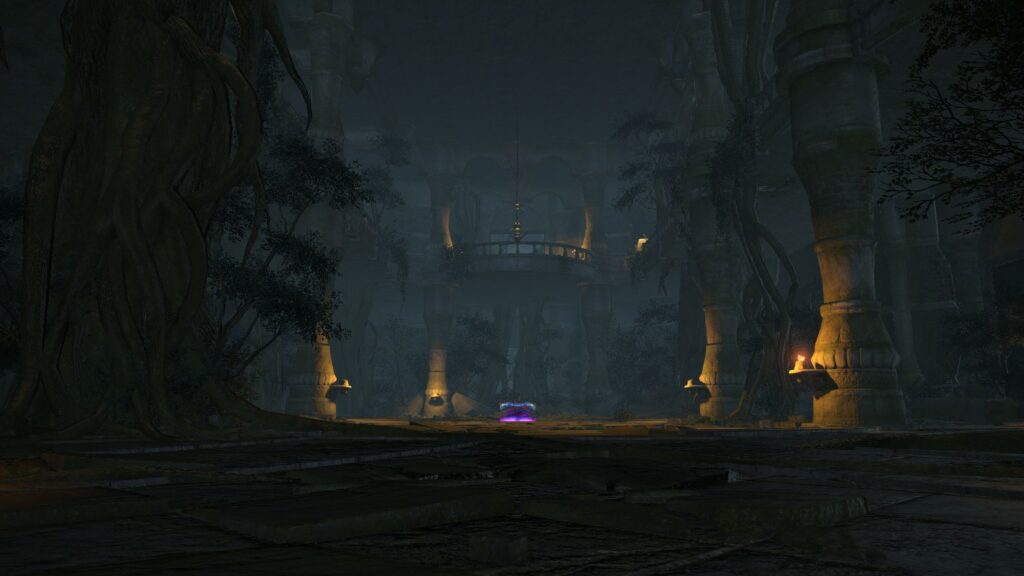
The Second Floor
The second floor of the Keep’s main atrium was divided into four wings and decorated with a number of winged statues. The plant imagery of Nophica continued to run through the Keep. A number of urns and chests could be found here, perhaps once containing weaponry for the Keep’s defenders, or food to sustain it through a siege. The corridors of the floor terminate before a pair of blue-flame braziers, demonstrating magical means in lighting them.
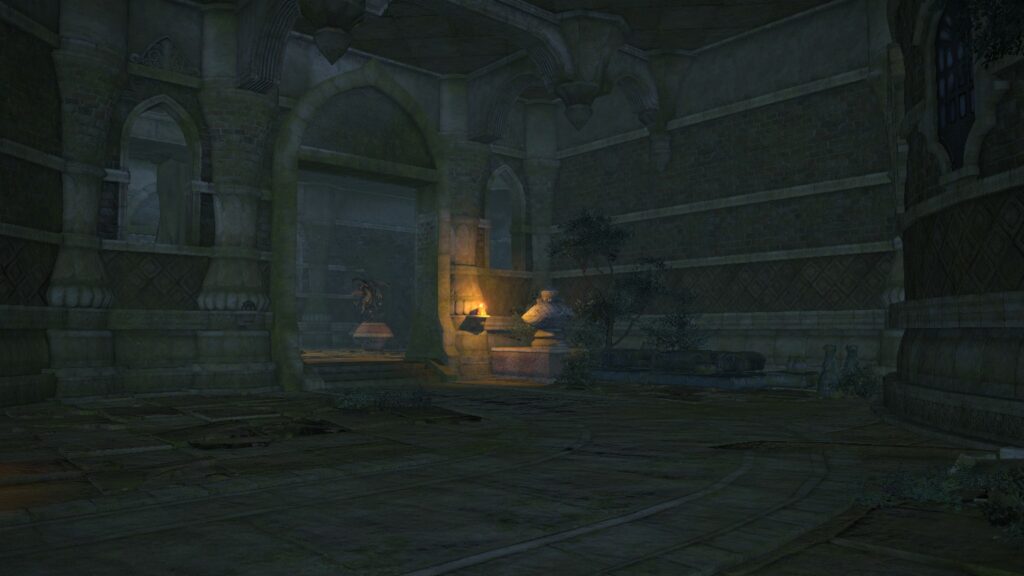
The Bloody Transept
A long, thin corridor framed by deep pits to an unforgiving stone floor, this area seems to be merely a fortified corridor through the Keep. A transept is traditionally a transverse section of a building, especially one of a church that lies north-to-south while the church proper lies east-to-west, forming a similar structure to a crucifix. This definition did not fit with this structure, and so it may be that transept was applied here merely to confer an air of holiness, and the bloody component of the name is almost certainly creditable to the battle with the Mhachi.
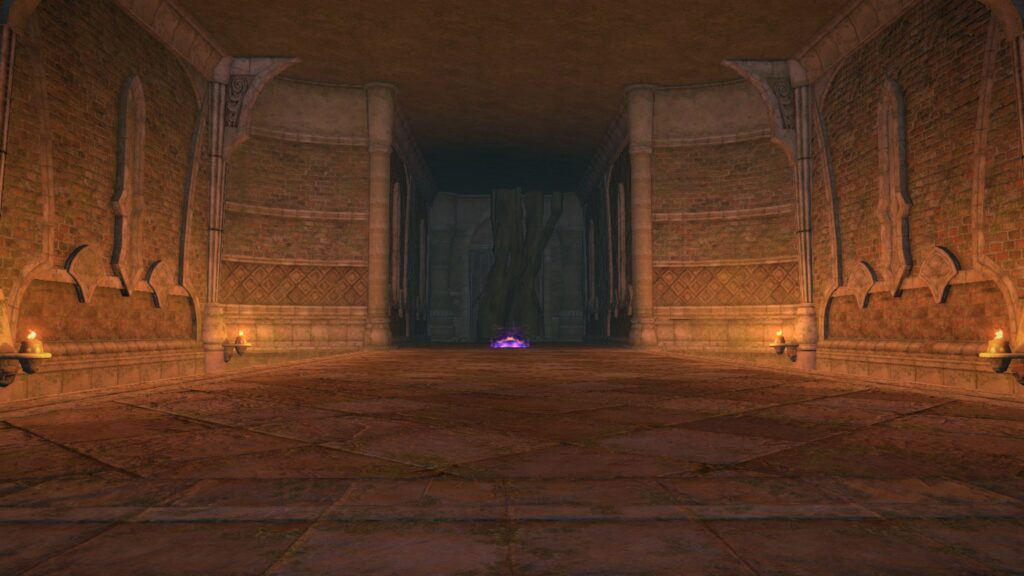
The Third Floor
The uppermost floor of the Keep, or at least its accessible regions, was composed mostly of elevated walkways joined by humped bridges. The beautiful high ceilings of the structure were on full display from here, and the walkways led into a small antechamber before the Keep’s final chamber.
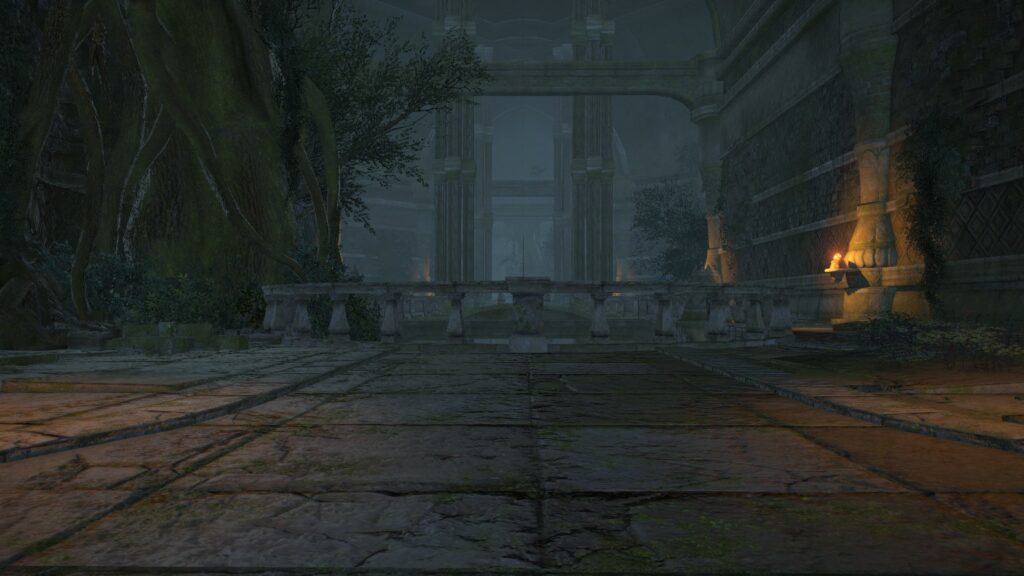
The Presence Chamber
The Presence Chamber was the room that hosted the windowed dome observed previously when the team entered the Forecourt. It was prefaced by a pair of beautifully ornate doors decorated with the same Nophica-inspired stylings as prior doors were. At the rear of the room was a small relief that seemed to depict a leaf-like pattern which rose over a small stone basin. This was most likely some form of shrine to Nophica. This room was likely intended to be sacred to the Amdapori goddess, although it is unclear if the presence in the room’s name was a reference to Nophica or one of the voidsent sealed within the Keep after its reclamation in the wake of the Mhachi defeat in Amdapor City.
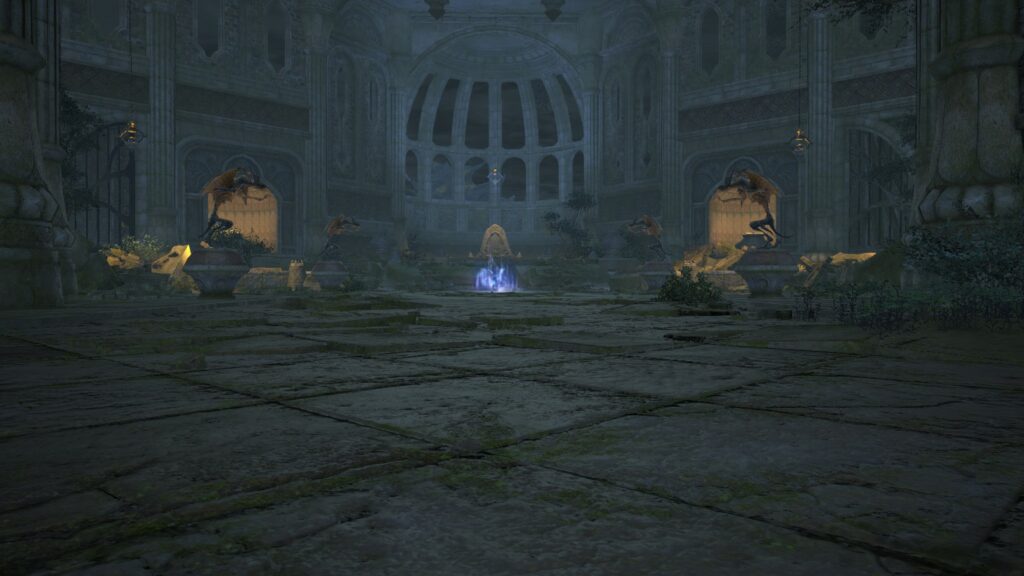




Leave a Reply